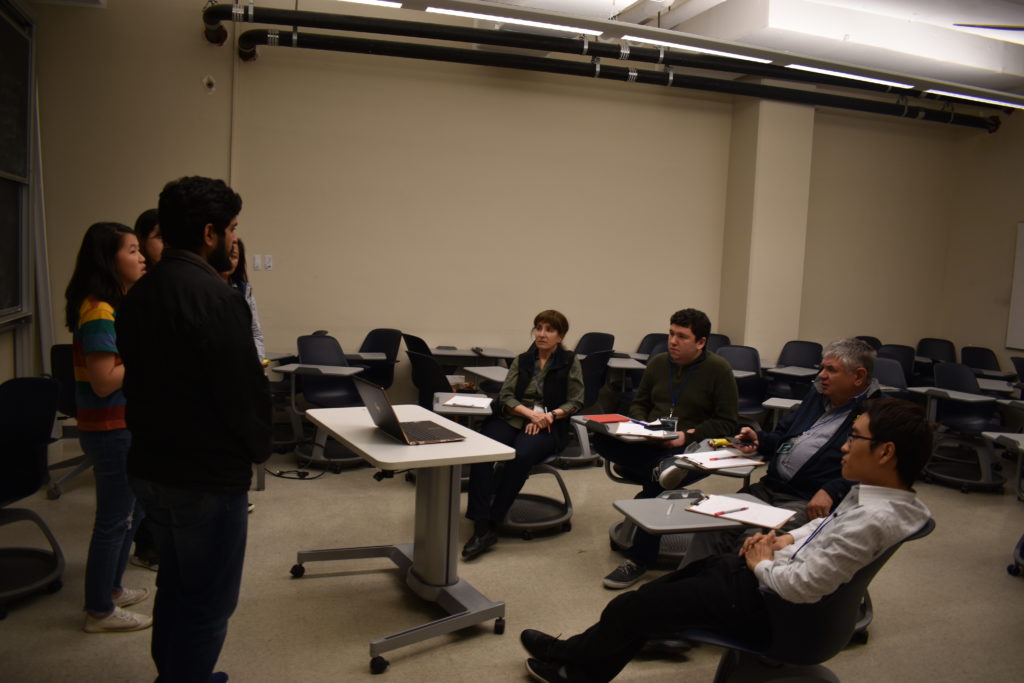BADSS — IISE’s Data Science Summit
Often regarded as the ‘combustion engine-like revolution’ of the 21st century, data analytics is on a rapid rise in today’s world. Realizing this, members of UC Berkeley’s Institute for Industrial and Systems Engineers (IISE) took the onus on themselves to host the second Bay Area Decision Sciences Summit (BADSS) on March 16th, 2019.
Much like the summit last year, the objective was to assemble a large community of aspiring students and established faculty passionate about the field of decision sciences. By having the students dissect an intriguing data set, and later, present their interpretation of the same to faculty judges, the purpose of the summit was to help develop collaborative analytical skills among the participating students.
With participating students, both undergraduate and graduate, from UC Berkeley, San Jose State University, San Francisco State University and Santa Clara University, the day began with a keynote speech delivered by Emily Garcia, President of IISE. Through her speech, Emily highlighted how IISE works with the IEORMS community at Cal by organizing social and professional events for the students. Following the welcome address, and after breakfast — wherein participants had the chance to interact with one another — participants broke out into their assigned teams. What followed was a series of workshops conducted by the Data Science Society (DSS) at UC Berkeley directed primarily towards students new to the domain of data analysis. Through the three workshops, students were introduced basic Python commands and developed an understanding for the fundamentals of data analysis.

It was then time for the big reveal — the data set to be analyzed and the problems to be solved. Found through Professor Aswani’s assistance, the data set for the summit was based on energy level usage by nonresidential buildings in various cities in the Unites States. From the data, the teams were required to identify trends, develop visualizations, compare energy usage, predict future behavior and recommend optimal locations for a business. The problem, and its accompanying prompts, were designed based on Professor Grigas’ advice.
After the introduction of data sets, teams were allotted several hours to analyze the data using skills they acquired through the workshops and their coursework. Within these working hours, the teams also had access to Data Science Society ‘Office Hours’, where they were free to ask for clarification and assistance on any and all concerns they would encounter along the way. While lunch was served within the working hours, it was fascinating to witness participating teams engrossed in breaking down their data to observe trends and identify patterns.
With the work session elapsed, attention turned towards Prof. Hochbaum, Prof. Oren, Prof. Grigas, and Prof. Cheung, to whom teams would now present their conclusions. Following the presentations, judges posed several questions to the teams and then gave them a score based on their progress through the problem, thoroughness of understanding and overall usage of analytical and reasoning skills.
Through this exercise, the team that stood out comprised of Pragyan Sharma, Calvin Kim, and Anita Tam. Beginning their work by aggregating the data set, the team tried to analyze the larger picture and aimed to develop a cycle of questions based on every plot and chart they created. On being questioned about the reason behind their approach during the presentation, the team claimed that it aided their understanding and allowed them to draw effective conclusions.

Beyond working on their presentation, there was a lot more to learn from, for the participants. Being in an environment that was deeply passionate about data analytics and decision science meant that participants had the chance to share their experiences and inspire their younger peers. Anita Tam, a UC Berkeley undergrad student and BADSS participant, called the event a valuable opportunity for beginners in coding, like herself, to get hands-on practice with real and relevant data. She further felt that being involved gave her a chance to work with and learn from more experienced coders and analysts.
Resonating Anita’s views about the experience gained in analytics from the summit, Anika Ramachandran, a lead organizer, was also extremely proud of the club’s efforts in organizing a successful event on a large a scale. Terming the event an amazing opportunity for everyone involved, she felt it was extremely rewarding to meet and help teams in analyzing the data and see the excitement and progress throughout the day.

Standing (L to R): Umut Uygur, Majd Muna, David Pailet, Nicholas Foo, Elliot Larson, Danny Campbell, Priyan Sathianathan
Sitting (L to R): Chad Wakamiya, Joshua Sanchez, Anika Ramachandran
The summit turned out to be a thoroughly structured and well-organized event, none of which would have been possible without the support of the IEOR faculty and staff, members of IISE and members of DSS. To have students from various schools, age groups and skill-sets come together to learn by doing, and leave after a grueling yet fulfilling day with increased exposure to and better understanding of data sciences was indeed a great sign for the success of BADSS.



